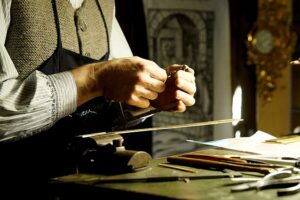The Craftmanship and Skill of Quality Watchmaking

The art and craftsmanship of watchmaking is a centuries-old tradition that has evolved over time to become a highly specialized and intricate craft. Building a great watch requires a mix of old and new methods, plus continuous focus on details. In this blog post, we will explore the various techniques and skills required to create a truly exceptional watch.
Design
The first step in creating a high-quality watch is designing the timepiece. A skilled watchmaker must have a deep understanding of the principles of horology, as well as an eye for aesthetics and design. The watchmaker must also consider the practical aspects of the watch, such as its intended use, durability, and functionality. The design process involves creating a blueprint or a technical drawing that will guide the rest of the manufacturing process.
Materials
The materials used in watchmaking are of the utmost importance in determining the quality and durability of the finished product. They typically make high-quality watches from precious metals such as gold, platinum, or titanium, or from high-grade stainless steel. The watchmaker must also handpick the materials used in the internal components of the watch, such as the gears, springs, and bearings, to ensure that they are both durable and reliable.
Assembly
The watchmaker must start assembling the watch once the design and materials have been selected. This involves using a variety of specialized tools and techniques to fit the internal components of the watch carefully into the case, including the movement, dial, hands, and crystal. The watchmaker must be highly skilled in order to ensure that each component is perfectly aligned and precisely fitted.
Finishing
After they have assembled the watch, the watchmaker must then turn their attention to finishing the timepiece. This involves a variety of techniques such as polishing, engraving, and decorative embellishment. The watchmaker must carefully polish the watch case and bracelet to a mirror-like shine, and may also engrave the watch with intricate designs or embellishments. The finishing process requires a steady hand, a meticulous attention to detail, and a deep appreciation for aesthetics and design.
Testing
Before they deemed the watch complete, the watchmaker must thoroughly test the timepiece to ensure that it is accurate and reliable. This involves testing the movement, ensuring that the watch is water-resistant, and subjecting the watch to a battery of tests to ensure that it can withstand a range of environmental conditions. The watchmaker must be highly skilled in order to perform these tests accurately and ensure that the watch meets the highest standards of quality and performance.
Finally, watchmaking is a complicated art and skill which needs a combination of old methods, modern technology, and careful attention to small details. Creating a high-quality watch requires a skilled watchmaker who has a deep understanding of horology, materials, assembly, finishing, and testing. The result is a beautiful and functional timepiece that will endure for generations to come.


